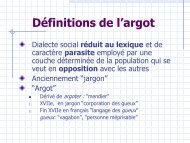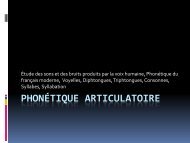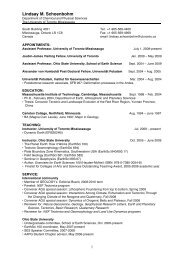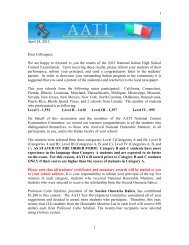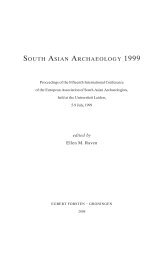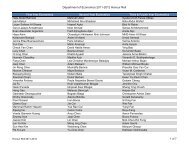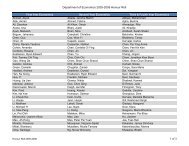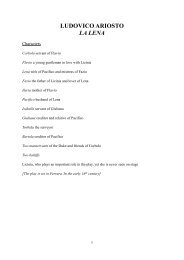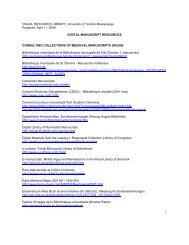Diatrype disciformis (Hoffm.) Fr.
Diatrype disciformis (Hoffm.) Fr.
Diatrype disciformis (Hoffm.) Fr.
Create successful ePaper yourself
Turn your PDF publications into a flip-book with our unique Google optimized e-Paper software.
Chestnut Blight Disease<br />
Contributed by<br />
Sandra L. Anagnostakis<br />
Connecticut Agricultural Experiment Station<br />
Box 1106<br />
New Haven, CT 06504<br />
Phone 203-974-8498<br />
Sandra.Anagnostakis@po.state.ct.us<br />
Figure 1. An American chestnut stem with a chestnut blight canker. (Click image for larger view and more information).<br />
Chestnut blight, or chestnut bark disease, is caused by an introduced fungus, Cryphonectria parasitica<br />
(Murrill) Barr, (formerly Endothia parasitica [Murrill] Anderson & Anderson). The fungus enters wounds,<br />
grows in and under the bark (Fig. 1), and eventually kills the cambium all the way around the twig,<br />
branch, or trunk (33). Sprouts develop from a burl-like tissue at the base of the tree called the ‘root<br />
collar,’ which contains dormant embryos (39). Sprouts grow, become wounded and infected, and die, and<br />
the process starts all over again.<br />
Cankers were first reported in the United States in 1904 on American chestnut trees (Castanea dentata<br />
[Marshall] Borkhausen) (Fig. 2) in New York City (32). None of the control attempts (chemical treatments,<br />
clearing and burning chestnut trees around infection sites) were successful (47). By 1926 the fungus was<br />
reported throughout the native range of American chestnut (Fig. 3), and a major forest tree had been<br />
reduced to a multiple-stemmed shrub (17). In 1912 the Plant Quarantine Act was passed to reduce the<br />
chances of such a catastrophe happening again (49).<br />
Fig. 1<br />
Fig 3<br />
Fig. 1. An American chestnut stem with a chestnut blight canker (Castanea dentata with a<br />
Cryphonectria parasitica canker). The fungus enters through wounds such as the broken branch<br />
stub on the left, and grows in and under the bark, killing the cambium. Fungal stromata break<br />
through the lenticels and pycnidia producing conidia and perithecia producing ascospores are<br />
formed. Photo by R. A. Jaynes.<br />
Fig. 2. An American chestnut tree (Castanea dentata [Marshall] Borkhausen) growing in Scotland,<br />
Connecticut in 1905. The tree was 83 feet tall, 27 inches in diameter, and 103 years old.<br />
Figure 3. The natural range of American chestnut as presented by Saucier in 1973<br />
http://www.apsnet.org/online/feature/chestnut/top.html<br />
Fig. 2



